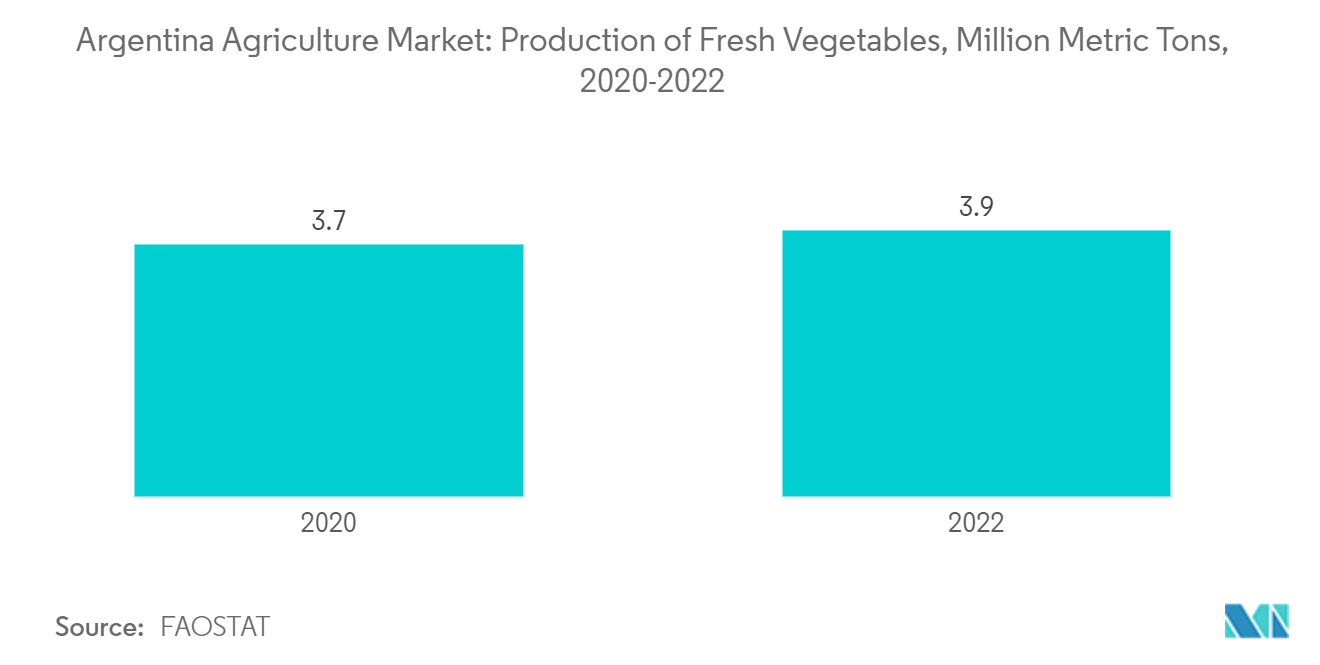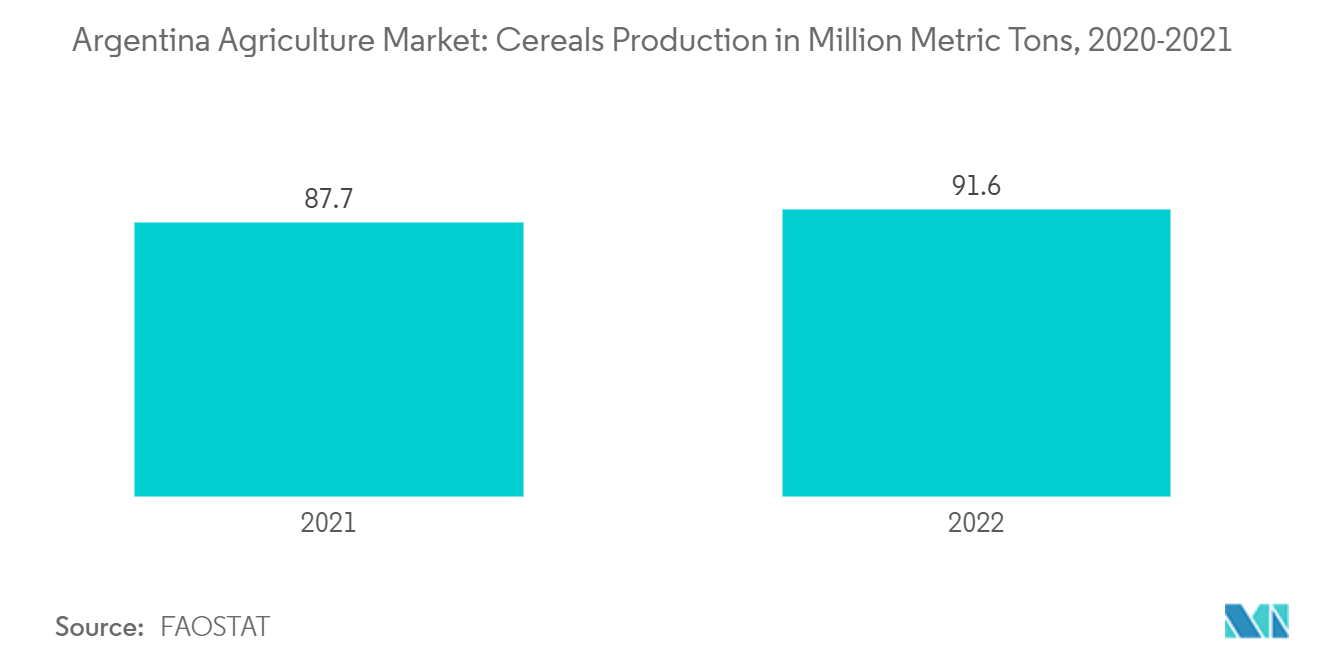Market Trends of Agriculture Industry In Argentina
Rising Health Awareness Has Boosted the Demand for Fruits and Vegetables
The increasing concern about health consciousness is leading to more consumption of fruits and vegetables, including the high import of off-season varieties into the market. There are some major fruits and vegetables, such as carrots, peppers, onions, chilies, beans, turnips, tomatoes, oranges, grapes, apples, peaches, avocados, and strawberries, that are expected to witness significant market growth potential in Argentina during the coming years. According to FAOSTAT, fresh vegetable production was 3.7 million metric tons in 2020, which increased to 3.9 million metric tons in 2022. Fresh fruit production was 6.7 million metric tons in 2021, which increased to 7.1 million metric tons in 2022.
Rising demand for organic food to minimize the chances of chronic diseases like cancer, hypertension, and diabetes among the population is anticipated to drive the Argentine agriculture market during the forecast period. Government agencies are implementing several agricultural policies and services to promote economic and infrastructural development in the country. For instance, the National Institute of Agricultural Technology (INTA) provides technical assistance for innovation in value chains, agricultural R&D, and extension services for small-scale producers.
The Argentine government adjusted export taxes on a variety of specialty crops, including apples, pears, citrus fruits, blueberries, tomatoes, broccoli, cauliflower, nuts, and alfalfa. The revisions set uniform export tax rates of 0%, 3%, 4.5%, and 9% across all the crops.
This initiative seeks to harmonize export tax rates among similar products, thereby fostering the export of value-added goods. The government is prioritizing products where a surge in production could boost employment, and increased exports would not drive up food prices. Furthermore, there is a strong emphasis on drawing investments to enhance domestic production and stimulate market growth during the forecast period.

Cereals and Grains is the Leading Segment in the Market
Producers' widespread adoption of crop diversification, particularly in cereals and grains, plays a pivotal role in risk management and soil sustainability. Cereals such as wheat, sorghum, corn, and barley enhance carbon fixation in the soil and promote denser vegetative coverage. This, in turn, mitigates soil and wind erosion and bolsters resistance to both biotic and abiotic stresses. According to FAOSTAT, cereal production rose from 87.7 million metric tons in 2021 to 91.6 million metric tons in 2022. In 2023, Argentina emerged as the leading producer and exporter of wheat in South America. Brazil stood out as a major importer, sourcing 94% of its wheat from Argentina, with Peru and Chile accounting for 4.5% and 1.3%, respectively.
Additionally, Argentina is researching genetically engineered new wheat known as HB4, which can use a gene taken from sunflowers. If successful, Argentina could keep its position as one of the world's top wheat exporters and might ease some agricultural concerns for the future, which would also drive the growth of the market. Currently, China and countries in North America and Europe are at lower than usual levels of wheat production because of drought. Also, the Russia-Ukraine War reduced the global wheat supply.
The rise in areas for silos for cereals and grains is also a key driver in enhancing the quality of logistics services and minimizing post-harvest losses. Additionally, silos minimize the risk of macroeconomic instability and shortage in credit among the farmers, thereby supporting the storage and transportation of the produce will boost the growth of the market in coming years.


